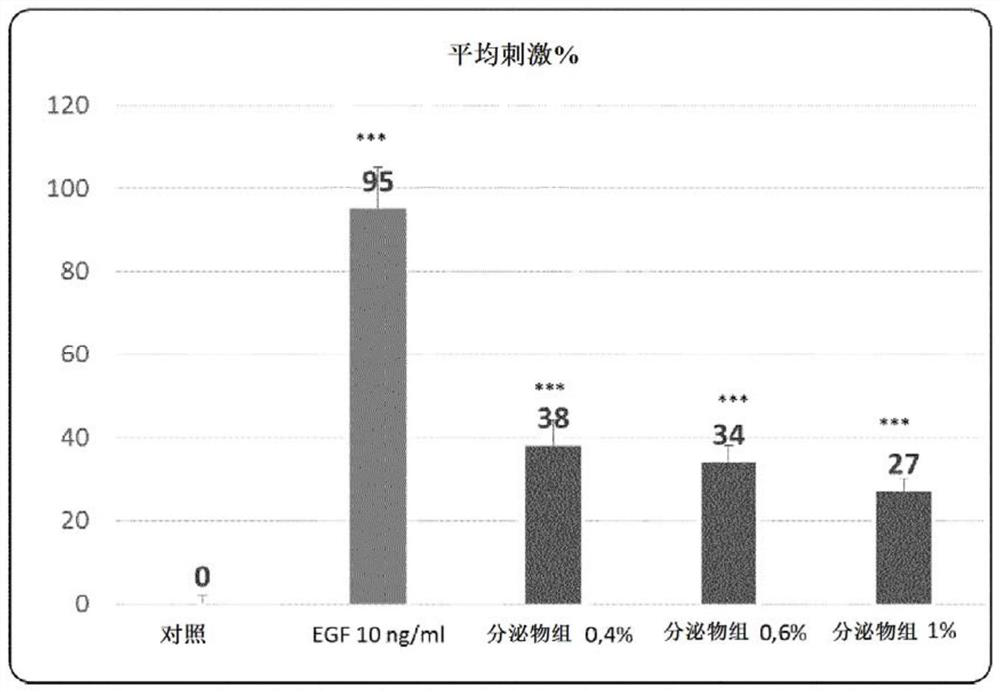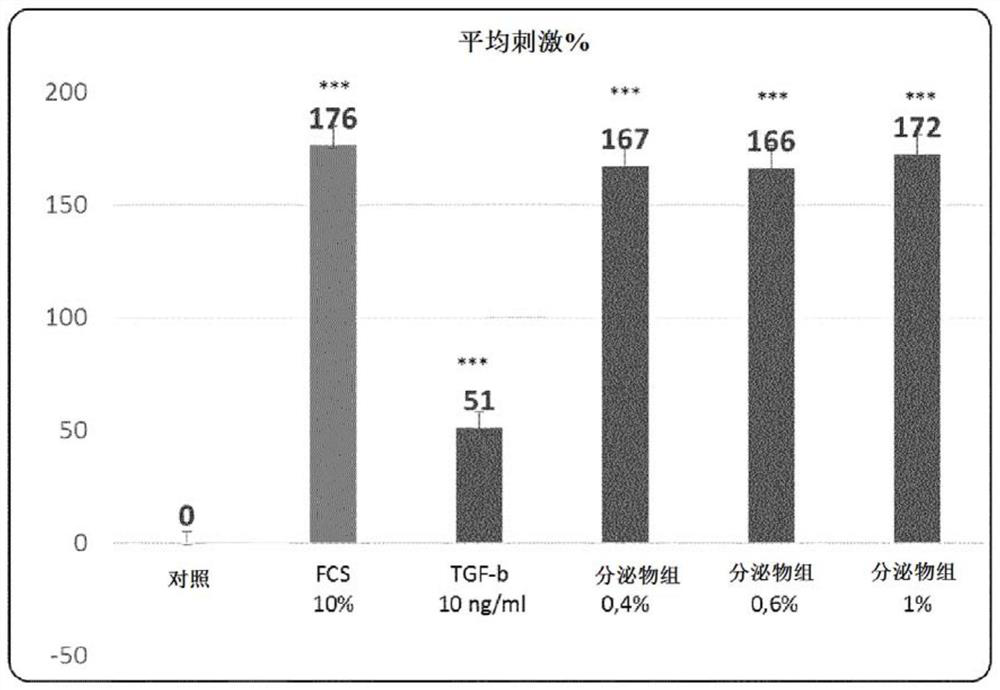Bacterial secretome for use in treatment of skin lesions
A technology for skin damage and secretions, applied in the field of cosmetic or dermatological compositions, which can solve cosmetic problems, unsightly problems, etc.
- Summary
- Abstract
- Description
- Claims
- Application Information
AI Technical Summary
Problems solved by technology
Method used
Image
Examples
Embodiment 1
[0120] Embodiment 1: the cultivation of bacteria LMB64
[0121] As non-limiting examples, preferred media contain ammonium chloride, magnesium sulfate, and yeast extract. It should also be noted that, as can be seen from application WO2012 / 085182, other similar media may be used and must therefore be considered as forming an integral part of this description. Any modifications by those skilled in the art must also be considered part of the invention.
[0122] An exemplary culture procedure is described below. It should be remembered here that this example is for illustrative purposes only and should in no way be considered restrictive.
[0123] Strain LMB64 was grown in three steps, namely first inoculation, pre-cultivation (or pre-fermentation) in batch mode, and finally cultivation in fed-batch mode (glucose addition).
[0124] Inoculation: Use one tube of WCB LMB64 to inoculate an Erlenmeyer flask containing 1000 mL of sterile medium. Then place the Erlenmeyer flask i...
Embodiment 2
[0137] Example 2: Extraction of the secretome
[0138] The following examples are given by way of illustration of preferred embodiments, but should in no way be considered limiting.
[0139] Typically, the secretome is obtained after centrifugation of the product of the culture step to remove cells, surface proteins, and proteins located in the periplasmic space of the bacteria. After this centrifugation step, Tris-arginine basic buffer was added to the supernatant. The step of filtering the supernatant may also be the last step. Any modifications by those skilled in the art must also be considered part of the invention.
[0140] Centrifugation: The transfer line from the fermenter to the centrifuge is sterilized. The ferment was then separated by continuous centrifugation on a centrifuge. The centrifugation is carried out at 150L / h (±30L / h), and the rotating speed of the drum is 10900±1000rpm. Collect the supernatant in a container with a disposable bag. Measure the w...
Embodiment 3
[0146] Example 3: Effect of Secretome on Proliferation of Normal Human Fibroblasts
[0147] The technique used is the incorporation of the nucleotide, 5-bromo-2'-deoxyuridine (BrdU), a thymidine analog, into the ADN of cells in S phase at 37°C. This technique allows quantification of cell cycle progression characteristic of cells that are proliferative (S or ADN synthesis phase).
[0148] Fibroblasts were seeded into 96-well plates and then incubated for 72 hours in the presence of the compound to be tested, EGF as a positive control, and 0.4%, 0.6% and 1% secretion group. BrdU incorporation was performed over the last 24 hours and quantified using the BrdU ELISA kit (Cat. No. 11647229001, Roche Diagnostics).
[0149] Calculate the % of control according to the following formula:
[0150] (value / mean of control) x 100
[0151] Stimulation in % was calculated according to the following formula:
[0152] Mean % stimulation = (mean(value / mean of control) x 100) - 100
[0153...
PUM
 Login to View More
Login to View More Abstract
Description
Claims
Application Information
 Login to View More
Login to View More - R&D
- Intellectual Property
- Life Sciences
- Materials
- Tech Scout
- Unparalleled Data Quality
- Higher Quality Content
- 60% Fewer Hallucinations
Browse by: Latest US Patents, China's latest patents, Technical Efficacy Thesaurus, Application Domain, Technology Topic, Popular Technical Reports.
© 2025 PatSnap. All rights reserved.Legal|Privacy policy|Modern Slavery Act Transparency Statement|Sitemap|About US| Contact US: help@patsnap.com



